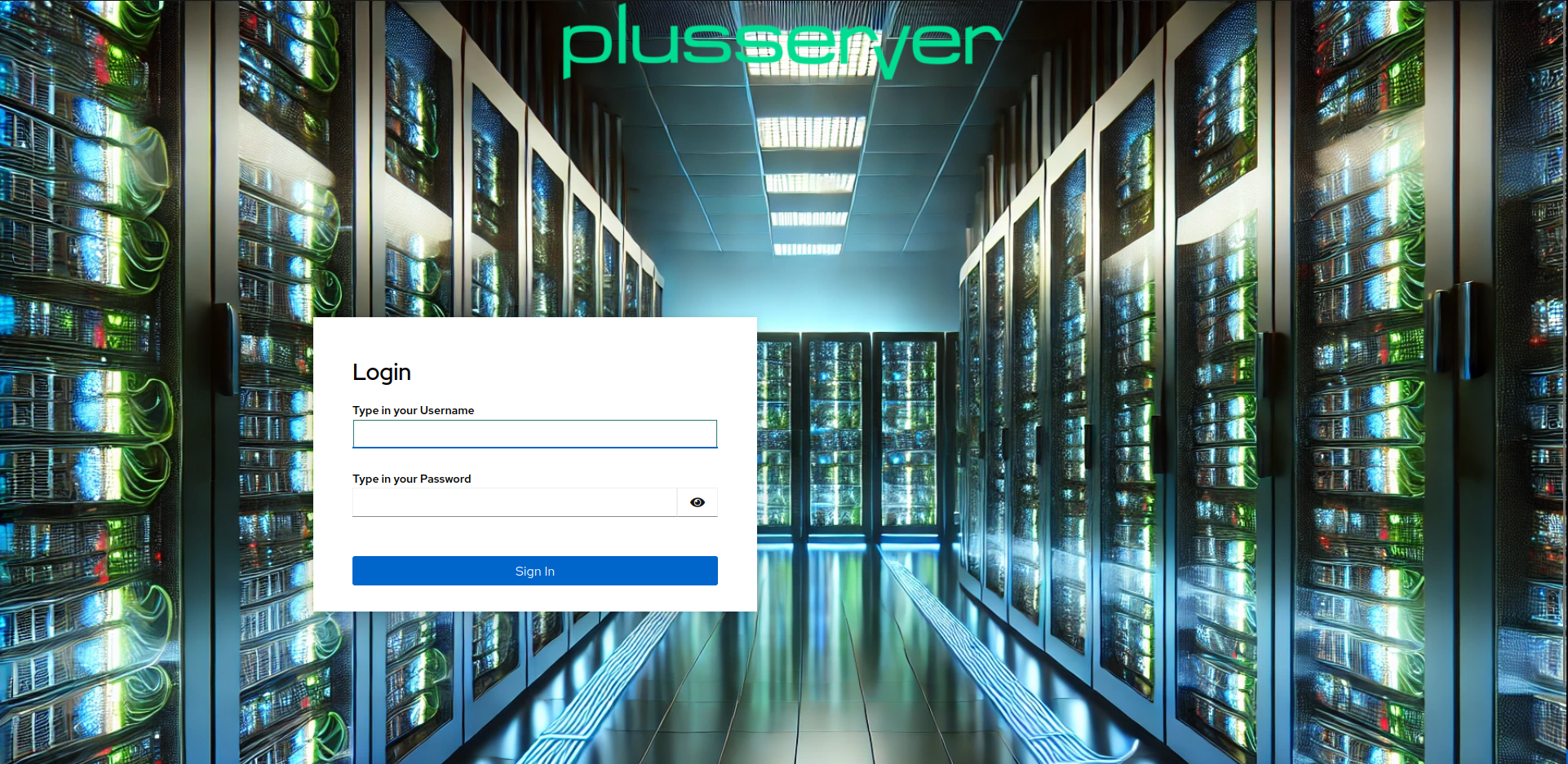Create a Custom Theme
4 minute read
In this tutorial, you’ll learn how to set up a local environment for developing Keycloak themes and create a customized login page.
Prerequisites
Before you begin, make sure you have:
A terminal that can run bash scripts
- Note: This tutorial is designed for Linux systems
- It may work on Windows (using WSL2) or macOS with some adjustments
Docker installed and running
To check if Docker is working, run these commands in your terminal:
docker --version docker-compose --versionIf both commands display version information, Docker is set up correctly
1. Setting Up a Local Development Environment
Follow these steps to set up your local development environment to create a custom Keycloak theme.
Step 1: Create the Project Structure
First, create a folder for your project and custom themes.
mkdir kc_themes_dev
mkdir kc_themes_dev/custom_themes
cd kc_themes_dev
Step 2: Create a Docker Compose File
Run this command to create the docker-compose file(Click)
cat <<EOF > docker-compose.yml
version: "3"
volumes:
postgres_data:
driver: local
services:
postgres:
image: postgres
volumes:
- postgres_data:/var/lib/postgresql/data
environment:
POSTGRES_DB: keycloak
POSTGRES_USER: keycloak
POSTGRES_PASSWORD: password
keycloak:
image: quay.io/keycloak/keycloak:25.0 # Change the version if needed
command: ["start-dev", "--import-realm"]
restart: unless-stopped
volumes:
- ./custom_themes:/opt/keycloak/themes
environment:
KC_DB: postgres
KC_DB_USERNAME: keycloak
KC_DB_PASSWORD: password
KC_DB_URL: "jdbc:postgresql://postgres:5432/keycloak"
KC_METRICS_ENABLED: "true"
KC_LOG_LEVEL: INFO
KC_REALM_NAME: keycloak
KEYCLOAK_ADMIN: admin
KEYCLOAK_ADMIN_PASSWORD: keycloak
ports:
- 8443:8443
- 8080:8080
depends_on:
- postgres
EOF
Step 3: Start the Docker Compose Stack
docker-compose up -d
Step 4: Verify Keycloak Is Working
Open your browser and go to http://127.0.0.1:8080. Log in with the following credentials:
- Username: admin
- Password: keycloak
Step 5 (Optional): Extract the Default Keycloak Themes
If you want to explore the default themes, you can extract them using the following script.
Create the Export Script(Click)
cat <<'EOF' > export_default_themes.sh
#!/bin/bash
# Set destination directory for the default themes
DEST_DIR="./kc_default_themes"
# Create directory for default themes
mkdir -p $DEST_DIR
# Get Container ID of the running Keycloak instance
CONTAINER_ID=$(docker ps | grep quay.io/keycloak/keycloak | awk '{print $1}')
# Get Keycloak themes JAR filename
JAR_FILE=$(docker exec ${CONTAINER_ID} sh -c "ls /opt/keycloak/lib/lib/main/ | grep 'keycloak-themes-.*.jar'")
# Fail if no themes JAR file is found
if [ -z "$JAR_FILE" ]; then
echo "Error: Couldn't find Keycloak themes JAR file."
exit 1
fi
# Copy the default themes JAR file from the container
docker cp ${CONTAINER_ID}:/opt/keycloak/lib/lib/main/${JAR_FILE} $DEST_DIR
# Extract the JAR file
echo "Extracting the JAR file..."
unzip -q "${DEST_DIR}/${JAR_FILE}" -d "${DEST_DIR}"
# Remove the JAR file after extraction if successful
if [ $? -eq 0 ]; then
echo "Extraction successful!"
rm -f "${DEST_DIR}/${JAR_FILE}"
else
echo "Error: Failed to extract the JAR file."
exit 1
fi
echo "Default themes have been successfully extracted to ${DEST_DIR}."
EOF
chmod +x export_default_themes.sh
bash ./export_default_themes.sh
2. Create a Customized Login Page
Now that your development environment is set up, let’s create a custom login page for Keycloak.
Step 1: Create Your Theme Folders
Create the following folder structure in your project:
custom_themes/mytheme/
└── login
├── messages
│ └── messages_en.properties
├── resources
│ ├── css
│ │ └── styles.css
│ └── img
│ ├── banner.png
│ └── bg.jpg
└── theme.properties
Step 2: Add Your Theme Files
theme.properties
This file defines the properties of your theme. Here, we inherit from the default keycloak.v2 theme and include our custom stylesheet.
parent=keycloak.v2
styles=css/styles.css
messages_en.properties
Customize the text for your login page by overwriting the default strings.
loginAccountTitle=Login
usernameOrEmail=Type in your Username
password=Type in your Password
styles.css
In this file, we add a background image and replace the default logo text with a custom company banner.
.login-pf body {
background-image: url('../img/bg.jpg');
background-size: cover;
}
.kc-logo-text {
display: none;
}
#kc-header-wrapper {
display: flex;
justify-content: center;
align-items: center;
background: url('../img/banner.png') no-repeat center;
background-size: contain;
height: 99px; /* Adjust height to your image */
}
Images
Place your background image (bg.jpg) and banner image (banner.png) inside the img folder.
Step 3: Apply the Custom Login Theme
To apply your custom theme, log in to the Keycloak Web Interface. Go to:
- Realm Settings > Themes
- In the Login Theme dropdown, select your custom theme (mytheme).
- Click on Save, logout from the webpanel and reload the site. You may need to restart the container if the theme doesn’t load correctly.
Final Result
The image below demonstrates the customizations we’ve made:
- The background image has been replaced.
- A company banner had been added to the center at the top of the page.
- The login form field descriptions have been updated with custom text.

You should now be able to customize and create themes according to your needs. Once your custom theme is ready for production, you can upload it to your Keycloak as a Service instance. For more details on the process, click here.